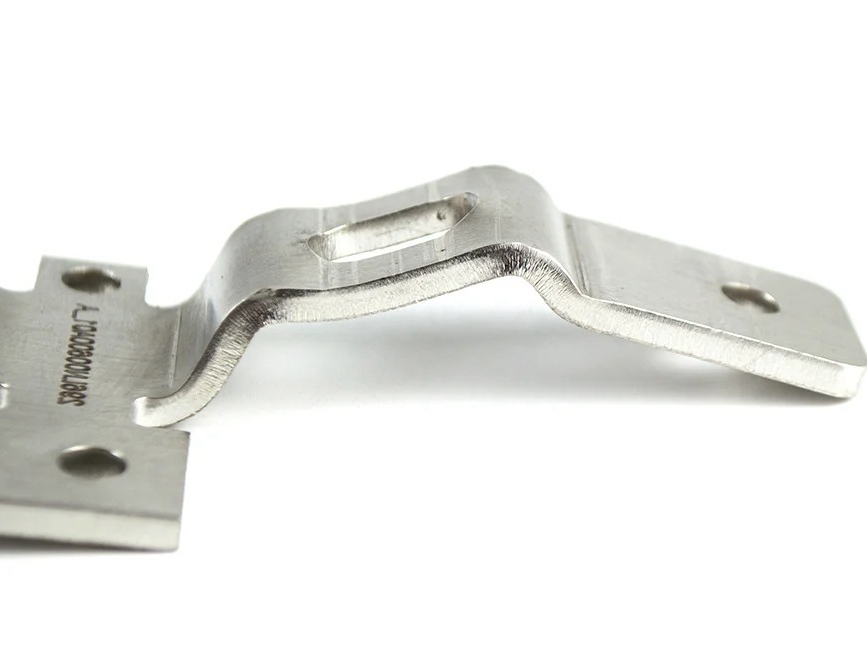How Passivation Enhances the Corrosion Resistance of Custom Metal Components
Introduction
Passivation is a chemical surface treatment method essential for enhancing the corrosion resistance of stainless steel and other metal components. By removing free iron particles and contaminants from the surface, passivation promotes the formation of a stable, protective oxide layer, significantly reducing susceptibility to rust and corrosion.
Globally, passivation has become indispensable across aerospace, medical devices, pharmaceuticals, and food processing industries. The increasing demand for reliable corrosion protection, cleanliness, and prolonged service life in high-performance applications reinforces the critical role of passivation processes.
Passivation Process Overview
Key Steps in Pretreatment
Thorough cleaning and degreasing to remove surface contaminants
Mechanical or chemical descaling for optimal surface cleanliness
Rinsing to prepare metal surfaces for chemical treatment
Comparison of Core Technologies
Technology | Treatment Method | Typical Application Time | Typical Applications | Efficiency |
|---|---|---|---|---|
Nitric Acid Passivation | Immersion in nitric acid bath | 20–60 minutes | Aerospace, medical equipment, food industry | High |
Citric Acid Passivation | Environmentally friendly acid bath | 10–30 minutes | Medical devices, precision instruments | Moderate-High |
Electrochemical Passivation | Electrolytic chemical treatment | 5–15 minutes | Highly sensitive components, semiconductor industry | High |
Post-processing and Optimization
Extensive water rinsing and neutralization to remove chemical residues
Drying and careful inspection for surface cleanliness and uniform oxide layer formation
Application of corrosion inhibitors or protective packaging (optional)
Passivation: Advantages and Limitations
Brief Introduction: Passivation effectively enhances corrosion resistance by forming a uniform oxide layer, significantly extending the lifespan of metal parts. However, its success depends on meticulous surface preparation and controlled processing conditions.
Property | Advantage / Limitation | Remarks and Typical Values |
|---|---|---|
Corrosion Resistance | Highly improved | Salt Spray Resistance (ASTM B117): >500 hrs typical |
Surface Cleanliness | Excellent removal of contaminants | Removes up to 99% free iron particles |
Dimensional Impact | No dimensional change | Chemical process does not alter part dimensions |
Environmental Impact | Moderate with nitric acid; lower with citric acid | Citric acid passivation environmentally friendly |
Durability | Long-lasting protection | Effective protection typically lasts several years |
Material Compatibility | Primarily effective for stainless steels | Less effective on non-stainless alloys |
Industrial Applications of Passivation
Examples include:
Medical Device Industry Passivation of medical devices, such as surgical instruments and implants, enhances corrosion resistance and cleanliness, dramatically improving reliability and safety (contaminant removal >95%).
Aerospace Sector Aerospace components utilize passivation for increased corrosion protection, meeting stringent quality standards and significantly extending component lifespan (corrosion resistance improved by >70%).
Food and Beverage Industry Equipment surfaces treated by passivation in food processing reduce contamination risks and extend maintenance intervals, enhancing hygiene and product safety (surface cleanliness improved by 90–95%).
Pharmaceutical Industry Pharmaceutical equipment benefits from passivation by preventing corrosion and minimizing particle generation, ensuring compliance with strict industry regulations (surface purity enhanced significantly).
Passivation Process Selection Guide
Material Adaptability Matrix
Substrate Type | Manufacturing Process | Recommended Passivation Process | Performance Gain Focus |
|---|---|---|---|
Nitric or Citric Acid Passivation | Optimal corrosion resistance, cleanliness | ||
Citric Acid Passivation | Enhanced surface purity, corrosion protection | ||
Electrochemical Passivation | Exceptional corrosion resistance | ||
Nitric Acid Passivation | Reliable corrosion protection, surface cleanliness |
Key Criteria for Evaluating Passivation Suppliers
Equipment Capability: Evaluate supplier's chemical handling facilities, controlled immersion tanks, and ability to perform precise process timing and rinsing procedures.
Process Certification: Verify compliance with passivation standards (ASTM A967, AMS 2700) and specific industry certifications (medical, aerospace).
Test Reports: Request surface cleanliness tests, corrosion resistance data (ASTM B117 salt spray), and analytical verification of iron removal.
Surface Treatment Technology Classification Matrix
Technology | Main Function (Specific & Comprehensive) | Key Features | Advantages |
|---|---|---|---|
Enhanced corrosion resistance, surface cleanliness | Salt Spray: >500 hrs, contaminant removal up to 99% | Excellent corrosion protection, cleanliness | |
Non-stick properties, chemical resistance | Coefficient of friction ~0.05 | Superior non-stick performance, chemical stability | |
Corrosion protection, durability | Coating thickness: 50–200 µm | Long-term protection, minimal maintenance | |
Aesthetic enhancement, durability | Decorative Chrome: 0.5–2 µm | Exceptional aesthetics, durability |
Technical Suitability Assessment (Passivation-Specific)
Four-Dimensional Assessment Model:
Material Compatibility: Highly compatible with stainless steel alloys (304, 316 series), titanium, cobalt, and nickel-based alloys.
Performance Requirements: Provides excellent corrosion resistance (Salt Spray ASTM B117: typically >500 hrs) and superior surface cleanliness (up to 99% removal of free iron particles).
Process Economics: Cost-effective for precision components requiring stringent cleanliness and corrosion standards; minimal operational expense.
Environmental and Safety Impact: Moderate environmental impact (especially nitric acid passivation); citric acid offers a safer, eco-friendly alternative and requires controlled chemical management per EPA and OSHA guidelines.
FAQ (Frequently Asked Questions):
What is the primary purpose of passivation?
Does passivation affect component dimensions?
How long does passivation protect against corrosion?
Is citric acid passivation as effective as nitric acid?
What standards govern passivation processes?

